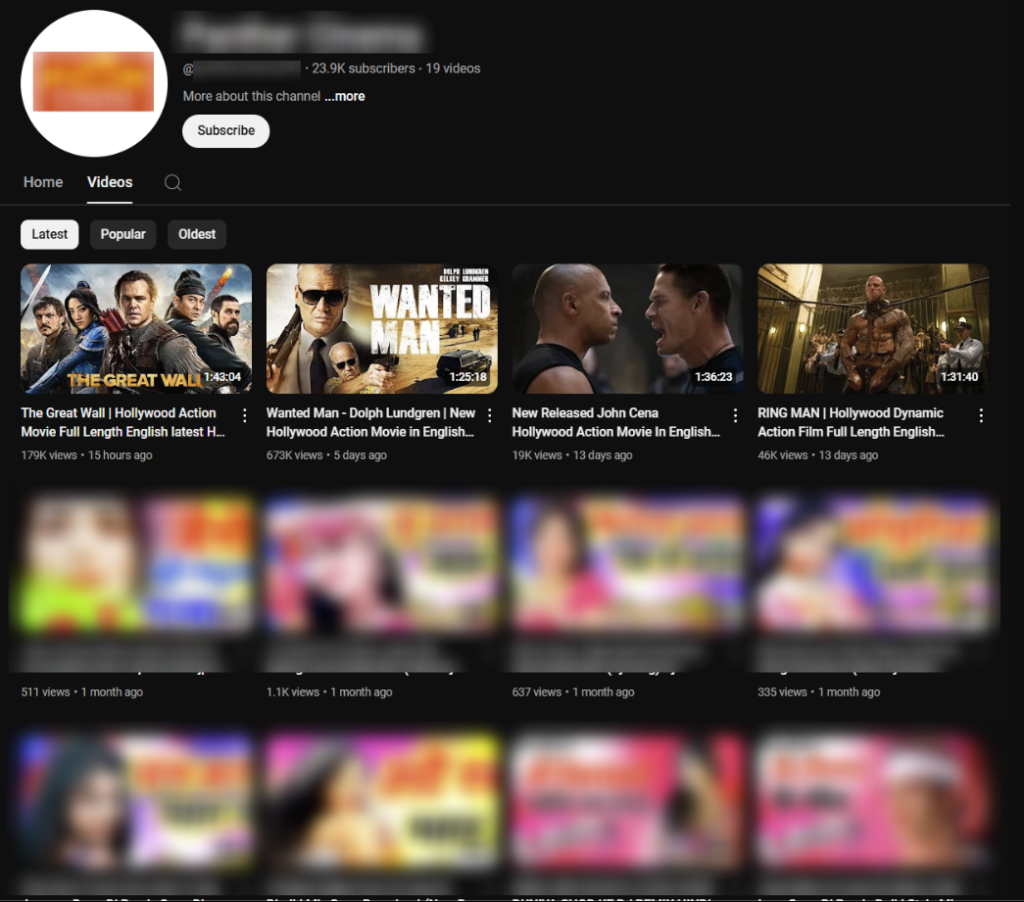Despite ongoing efforts by YouTube and copyright holders to prevent piracy, some users have always managed to slip through the cracks. However, a new and unexpected trend has emerged: channels that have been dormant for over 15 years, as well as newer channels with no history of infringement, are suddenly hosting the latest Hollywood blockbusters. These uploads are attracting tens of millions of views, with the true numbers potentially even higher.
One channel, for example, was created by a user named “haroldlky” on April 24, 2007. On that day, he uploaded three short engineering-themed videos totaling just 42 seconds. Over the next 17 years, these videos garnered fewer than 400 views. It’s unclear if “haroldlky” ever returned to YouTube, but if he checked his channel today, he’d be shocked to see it transformed into a platform for pirated movies.

A Sudden Surge in Illegal Uploads
In less than two weeks, these compromised channels have accumulated nearly a million views through unauthorized movie uploads. While it’s difficult to pinpoint all the affected channels, a few notable examples highlight the trend. One channel, created on September 17, 2023, with 117,000 subscribers and only seven videos, has garnered 7.4 million views in just 10 days, primarily from pirated content. Another channel, dating back to March 31, 2007, with just three videos and 6,100 subscribers, saw a single pirated movie, “Fate of the Furious,” amass 582,000 views within a single day.
The sudden appearance of pirated movies on channels previously dedicated to non-controversial content like math tutorials suggests that these channels have likely been hijacked.
Unpacking the Piracy Scheme
Updates indicate that these uploads may be part of a sophisticated scheme designed to exploit YouTube’s Content ID system. The process could involve the following steps:
- Create or obtain audio tracks that evade detection by Content ID.
- Illegally register these tracks with digital distribution services like DistroKid, CD Baby, or TuneCore, who remain unaware of the fraud.
- Obtain a popular movie likely to attract a large audience.
- Use software to attach the undetectable audio track to the end of the movie.
- Upload the altered video to YouTube.
- Wait for a content match on the music, thereby monetizing the entire video.
- Earn a small profit, or nothing if the fraud is discovered by royalty collection agencies.

What’s Next?
This wave of pirated content raises serious concerns about YouTube’s anti-piracy capabilities. The fact that these movies are racking up millions of views without being flagged suggests that something has gone awry in YouTube’s Content ID system, especially for new and popular titles.
While the identities of those behind this operation remain unclear, initial indications point to a possible connection to India, based on various factors including user interactions. However, the larger issue is how these uploads have so effectively bypassed YouTube’s safeguards, allowing pirated content to flourish on such a massive scale.